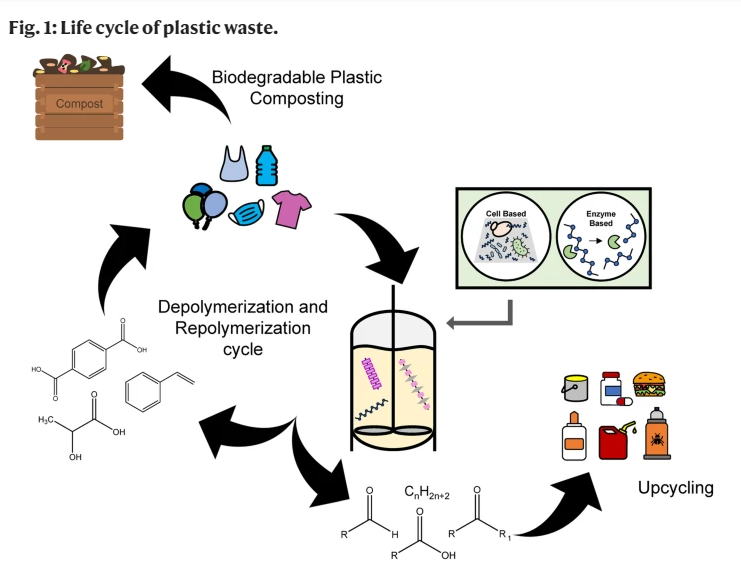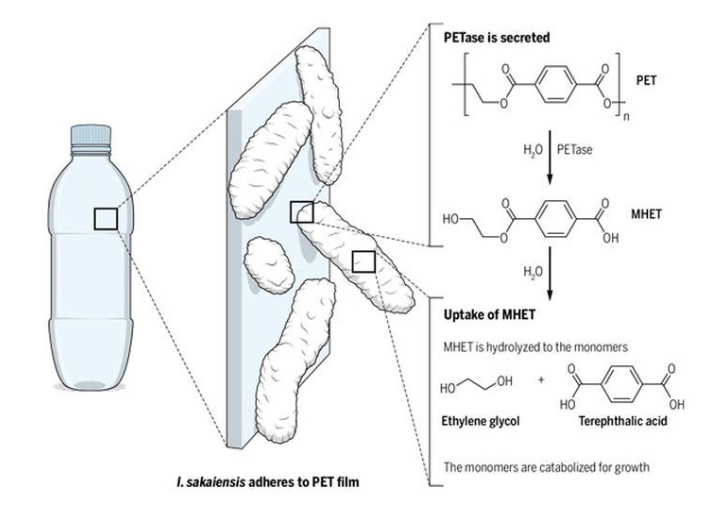Harnessing Bacteria to Tackle Ocean Plastic Pollution: A New Hope
Written on
Understanding Plastic Pollution and Its Consequences
The oceans, once a symbol of beauty and life, now face a crisis of pollution and waste. As Sir David Attenborough aptly puts it, “Industrial pollution and the discarding of plastic waste must be tackled for the sake of all life in the ocean.” The sight of Styrofoam bottles, rubber debris, and a plethora of garbage marring the ocean's blue expanse is alarming. Beaches are tainted with unpleasant odors, and microplastics are seeping into our food systems. Rather than serving as a cradle for humanity, the ocean increasingly resembles a polluted landfill.
Since plastic was first synthesized in the 1930s, it has become ubiquitous across various sectors. Just glance around your surroundings; how many items are crafted from plastic? While it provides convenience, plastic poses a significant threat to marine ecosystems. Images of turtles trapped in plastic bags or fish consuming microplastics dominate headlines, highlighting an urgent issue that requires immediate attention.
Every day, hundreds of thousands of bottles enter the ocean. As of 2015, it was estimated that over 5 trillion plastic pieces, weighing more than 268,940 tons, were adrift in our seas — and that figure is nearly a decade old. Current cleanup initiatives are insufficient, and effective management strategies for this vast waste problem remain elusive. However, emerging research into fungi and bacteria capable of metabolizing plastic might offer a glimmer of hope.
The Science Behind Plastic and Its Decomposition
Plastics are primarily hydrocarbon polymers derived from crude oil, a finite resource, and they can take centuries to decompose naturally. Even when they do break down, they simply fragment into smaller particles rather than disappearing entirely. The challenge of recycling plastics is compounded by the fact that products often consist of various types, such as polyethylene (PE), polyethylene terephthalate (PET), and polyvinyl chloride (PVC), making separation difficult. While some nations have robust recycling protocols, many plastics end up in landfills or, worse, the ocean after a few uses.
In an ideal world, the lifecycle of plastic waste would follow a circular model where biodegradable components are composted, nourishing fungi, algae, and bacteria, while the remainder is depolymerized and transformed into new products. Unfortunately, we currently lack the technological and legal frameworks necessary to achieve this.

Instead, plastics are broken down into smaller fragments in waste management facilities or through natural wave action. This process, known as weathering, involves photochemical reactions from sunlight or oxidation, reducing large plastic polymers to sizes that microbes can consume.
Enter the Plastic-Eating Bacteria
The spotlight now turns to a remarkable discovery — plastic-eating bacteria. First identified in a PET bottle recycling plant in Japan in 2016, the bacterium Ideonella sakaiensis possesses an enzyme capable of degrading plastic. This enzyme specifically digests PET, which constitutes 12% of global solid waste. Remarkably, within six weeks at 30ºC, it significantly damaged and nearly completely degraded PET film.
The enzyme hydrolyzes the PET polymer into two environmentally friendly monomers: terephthalic acid (TPA) and ethylene glycol (EG). These monomers can either serve as raw materials for creating high-quality virgin PET (enzymatic recycling) or act as feedstock for bacteria (biodegradation). This groundbreaking finding has shifted the focus of research toward plastic recycling, prompting scientists to search for more effective bacteria and enzymes that can break down a broader array of plastics at accelerated rates.

Embracing Enzymatic Recycling
Innovative companies like Carbios in France are now leveraging enzymes for plastic degradation. Carbios has commercialized the enzymatic degradation process to convert fossil fuel-based polymers into their basic monomers, which can then undergo enzymatic recycling or biodegradation.
Enzymatic recycling entails reusing the monomers produced during the depolymerization process. These monomers are purified and can be re-polymerized into PET of comparable quality to that derived from the petrochemical industry. This advancement provides hope for transitioning to a circular economy that challenges the conventional “take-make-waste” model of the plastic industry. Recently, Carbios partnered with the renowned cosmetic brand L’OCCITANE en Provence to produce 100% biorecycled transparent bottles, promoting sustainability within the beauty sector.
The Future of Plastic Solutions in Our Oceans
With the advent of plastic-eating bacteria, there is a renewed sense of optimism in tackling oceanic plastic pollution. Initiatives like Carbios showcase the feasibility of biologically digesting ocean plastic on a large scale. However, can these newly discovered enzymes act as our environmental vacuum cleaners, eliminating microplastics from the ocean?
The reality is more complicated. Currently, enzymatic degradation is limited to a handful of plastic types, such as PET and PUR. Unfortunately, no known enzymes can decompose PE, which is anticipated to reach 134.84 million tonnes by 2027. Thus, this approach cannot address the entire spectrum of plastic waste.
Moreover, this technology is still in its infancy, and we lack comprehensive understanding of its mechanisms. It’s not as simple as introducing bacteria and enzymes into the ocean and expecting them to resolve pollution. Careful consideration of potential consequences is crucial before deploying this technology on a large scale. Further research is essential to comprehend the implications of these biological solutions before they are applied in marine environments.
Nonetheless, swift action is imperative to address the plastic crisis in our oceans. Establishing a pilot plant to treat seawater contaminated with microplastics via enzymatic degradation would be a prudent next step to assess this approach's effectiveness.
In parallel, we must also focus on reducing the generation of new plastics. No solution can rival the impact of decreasing production at the source. It is astonishing how humanity can create materials that are so unnatural and yet endure for centuries. We must become better stewards of our environment for future generations.
“It is the worst of times but it is the best of times, because we still have a chance” — Sylvia Earle
For additional insights on sustainability and environmental topics authored by me, please visit here. If you appreciate this content and wish to support my work, feel free to buy me a coffee!
Exploring Marine Plastic-Eating Bacteria
The first video titled "Could Bacteria in the Ocean Be Eating Plastic?" delves into the fascinating research surrounding bacteria that might digest plastic pollution in our oceans.
The second video, "Are marine plastic-eating bacteria a lie?", critically examines the claims about these bacteria and their efficacy in addressing plastic waste.